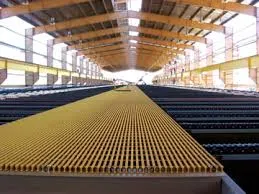
-
 Afrikaans
Afrikaans -
 Albanian
Albanian -
 Amharic
Amharic -
 Arabic
Arabic -
 Armenian
Armenian -
 Azerbaijani
Azerbaijani -
 Basque
Basque -
 Belarusian
Belarusian -
 Bengali
Bengali -
 Bosnian
Bosnian -
 Bulgarian
Bulgarian -
 Catalan
Catalan -
 Cebuano
Cebuano -
 China
China -
 China (Taiwan)
China (Taiwan) -
 Corsican
Corsican -
 Croatian
Croatian -
 Czech
Czech -
 Danish
Danish -
 Dutch
Dutch -
 English
English -
 Esperanto
Esperanto -
 Estonian
Estonian -
 Finnish
Finnish -
 French
French -
 Frisian
Frisian -
 Galician
Galician -
 Georgian
Georgian -
 German
German -
 Greek
Greek -
 Gujarati
Gujarati -
 Haitian Creole
Haitian Creole -
 hausa
hausa -
 hawaiian
hawaiian -
 Hebrew
Hebrew -
 Hindi
Hindi -
 Miao
Miao -
 Hungarian
Hungarian -
 Icelandic
Icelandic -
 igbo
igbo -
 Indonesian
Indonesian -
 irish
irish -
 Italian
Italian -
 Japanese
Japanese -
 Javanese
Javanese -
 Kannada
Kannada -
 kazakh
kazakh -
 Khmer
Khmer -
 Rwandese
Rwandese -
 Korean
Korean -
 Kurdish
Kurdish -
 Kyrgyz
Kyrgyz -
 Lao
Lao -
 Latin
Latin -
 Latvian
Latvian -
 Lithuanian
Lithuanian -
 Luxembourgish
Luxembourgish -
 Macedonian
Macedonian -
 Malgashi
Malgashi -
 Malay
Malay -
 Malayalam
Malayalam -
 Maltese
Maltese -
 Maori
Maori -
 Marathi
Marathi -
 Mongolian
Mongolian -
 Myanmar
Myanmar -
 Nepali
Nepali -
 Norwegian
Norwegian -
 Norwegian
Norwegian -
 Occitan
Occitan -
 Pashto
Pashto -
 Persian
Persian -
 Polish
Polish -
 Portuguese
Portuguese -
 Punjabi
Punjabi -
 Romanian
Romanian -
 Russian
Russian -
 Samoan
Samoan -
 Scottish Gaelic
Scottish Gaelic -
 Serbian
Serbian -
 Sesotho
Sesotho -
 Shona
Shona -
 Sindhi
Sindhi -
 Sinhala
Sinhala -
 Slovak
Slovak -
 Slovenian
Slovenian -
 Somali
Somali -
 Spanish
Spanish -
 Sundanese
Sundanese -
 Swahili
Swahili -
 Swedish
Swedish -
 Tagalog
Tagalog -
 Tajik
Tajik -
 Tamil
Tamil -
 Tatar
Tatar -
 Telugu
Telugu -
 Thai
Thai -
 Turkish
Turkish -
 Turkmen
Turkmen -
 Ukrainian
Ukrainian -
 Urdu
Urdu -
 Uighur
Uighur -
 Uzbek
Uzbek -
 Vietnamese
Vietnamese -
 Welsh
Welsh -
 Bantu
Bantu -
 Yiddish
Yiddish -
 Yoruba
Yoruba -
 Zulu
Zulu
Exploring Alternatives to Fiberglass Stack Liners for Enhanced Performance and Durability
Exploring Alternatives to Fiberglass Stack Liners
In various industrial applications, fiberglass stack liners have been widely used for their durability and resistance to corrosion and high temperatures. However, as industries evolve and environmentally friendly practices gain prominence, the search for alternative materials has become increasingly important. This article explores some viable alternatives to fiberglass stack liners, examining their benefits and potential drawbacks.
Exploring Alternatives to Fiberglass Stack Liners
Another alternative is stainless steel liners. Stainless steel is highly resistant to corrosion and can endure extreme temperatures, making it a reliable choice for stack lining in various industries. Unlike fiberglass, stainless steel is recyclable, which adds to its appeal from an environmental standpoint. However, while stainless steel liners tend to be more robust than fiberglass, they can be heavier and may require additional structural support, potentially increasing installation costs.
fiberglass stack liner alternative

Composite materials made from advanced polymers are also gaining traction as alternatives to traditional fiberglass liners. These composites can be engineered to offer enhanced resistance to chemicals, heat, and mechanical stress. Furthermore, they can be produced to meet specific application requirements, making them flexible solutions for various industries. However, the relatively higher cost and the need for specialized manufacturing processes might limit their widespread adoption.
Moreover, rubber linings are an option worth considering, particularly in applications where flexibility and impact resistance are crucial. Rubber offers good resistance to a variety of chemicals and can also withstand a range of temperatures. It can be particularly effective in environments where vibrations and physical impacts are common. Nonetheless, rubber may not have the same high-temperature capabilities as ceramics or stainless steel.
While exploring alternatives to fiberglass stack liners, it is essential to consider not only the physical properties and costs of these materials but also their long-term environmental impacts. The push for sustainable practices is influencing many industries to rethink their material choices. As research and development continue, new materials and technologies will likely emerge, offering enhanced performance and reduced environmental footprints.
In conclusion, while fiberglass stack liners have served industries well for decades, several viable alternatives are now available. By weighing the benefits and drawbacks of materials like ceramics, stainless steel, composites, and rubber, industries can make informed choices that align with both operational needs and environmental responsibilities. As we move toward a more sustainable future, the exploration of innovative materials will play a crucial role in shaping industrial practices.









